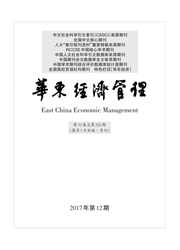

 中文摘要:
中文摘要:
旅游目的地品牌化正成为我国旅游业发展的新常态,旅游目的地品牌体验逐渐成为旅游业界和学术界共同聚焦的课题。IPA分析法简单直观,被广泛用于各领域的研究,但由于缺乏严谨的数据分析,其信度和效度颇受质疑。文章以都江堰为例,探讨新常态下旅游目的地品牌体验的IPA分析范式。对IPA分析法进行了多维正态分布检验、问卷信度与效度检验、重复测量方差分析、配对样本T检验及多重共线性检验,并分别采用自述重要性法、多元回归系数法、邓维兆偏相关系数法和L-H偏相关系数法对旅游目的地品牌体验进行IPA分析,结果显示4种IPA分析结果的差异较大,据此提出相关管理建议。
 英文摘要:
英文摘要:
Tourism destination branding is becoming a new normal for Chinese tourism development. Destination brand experi-ence is now a hot issue for both scholars and practitioners. Importance-performance analysis(IPA)is used in many researchfields due to its simplicity. However,it has been criticized for lack of rigorous data analysis which triggers concerns over reli-ability and validity. Taking Dujiangyan as an example,this study discusses an importance-performance analysis framework ofdestination brand experience under a new normal. The study makes the verification of the multivariate normal distribution,reliability and validity of the questionnaire,repeated measures ANOVA,paired samples T test and multicollinearity test onIPA,and performs IPA on destination brand experience by employing self-reported importance approach,multiple regressionapproach,Deng's partial correlation approach and Lai-Hitchcock's partial correlation approach respectively,the resultsshow that the four I-P mappings are greatly different. The paper puts forth the relevant proposals on the management accord-ing to the results of I-P mappings.
 同期刊论文项目
同期刊论文项目
 同项目期刊论文
同项目期刊论文
 期刊信息
期刊信息
